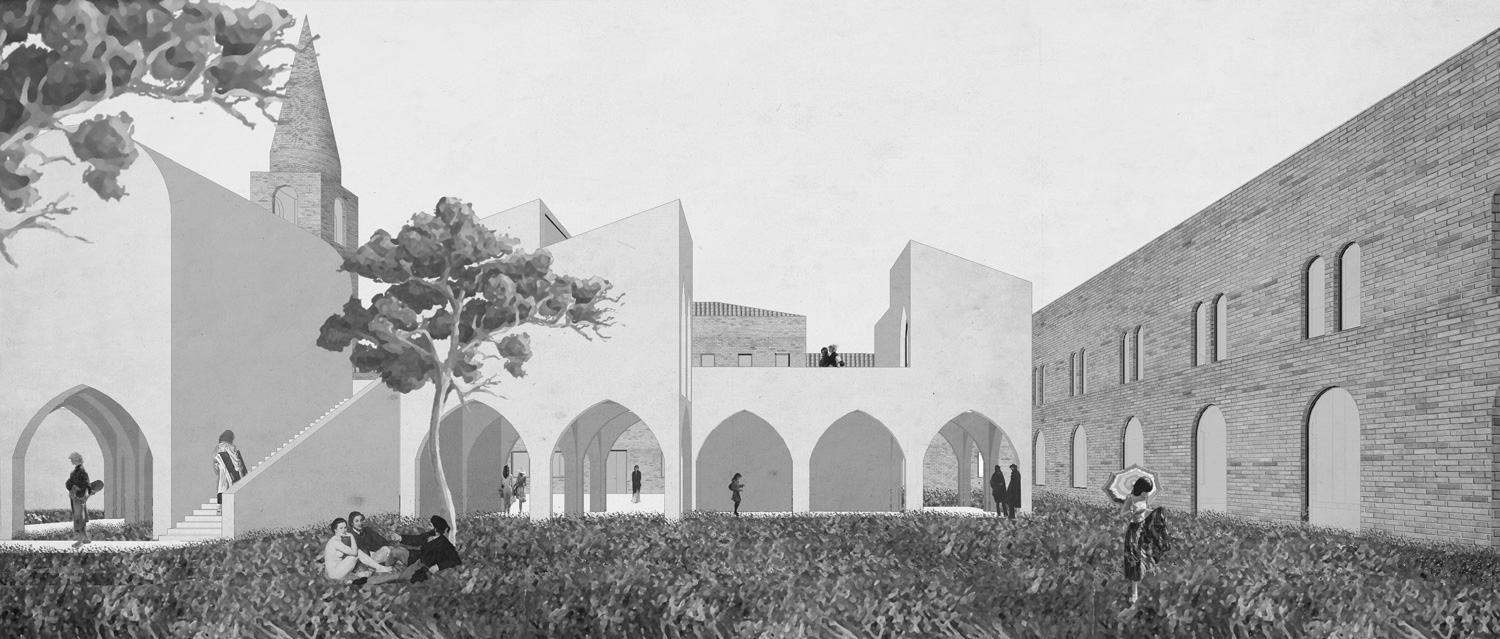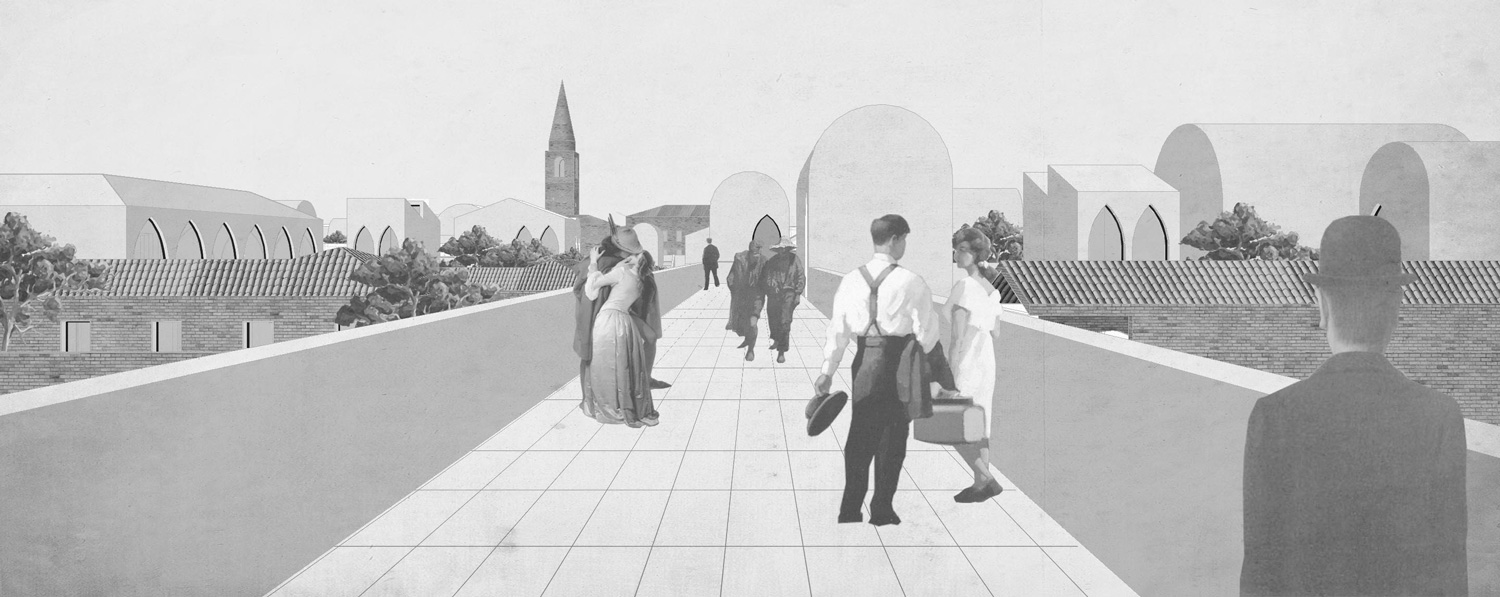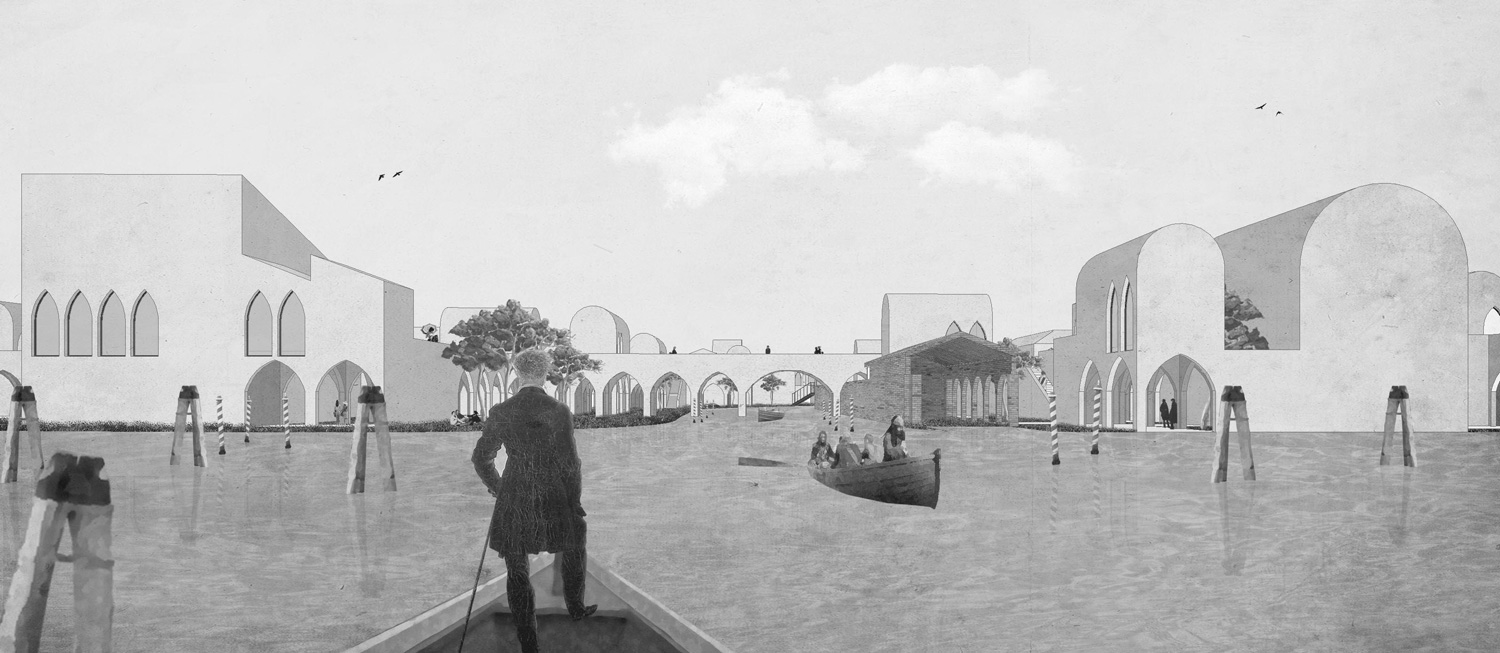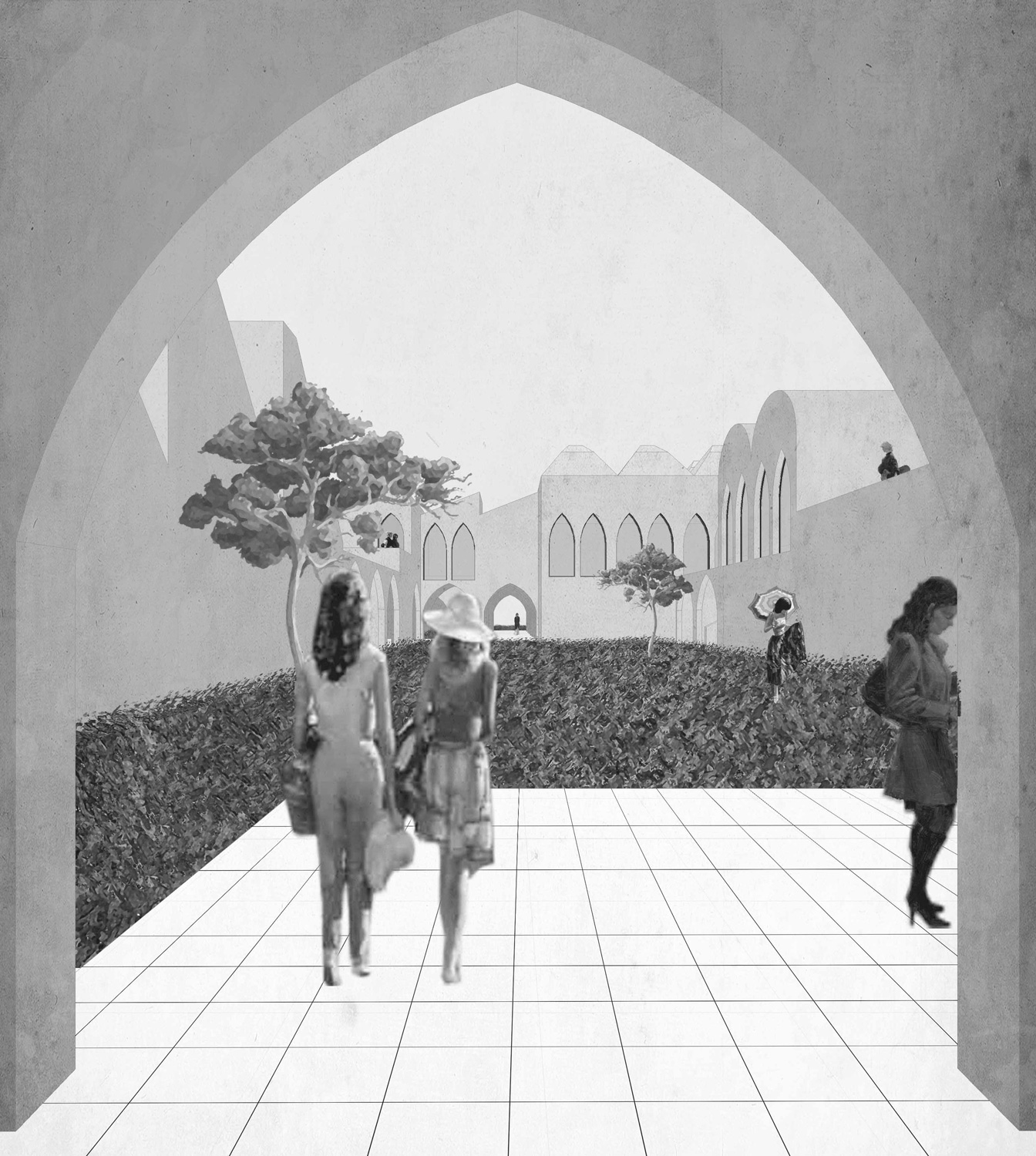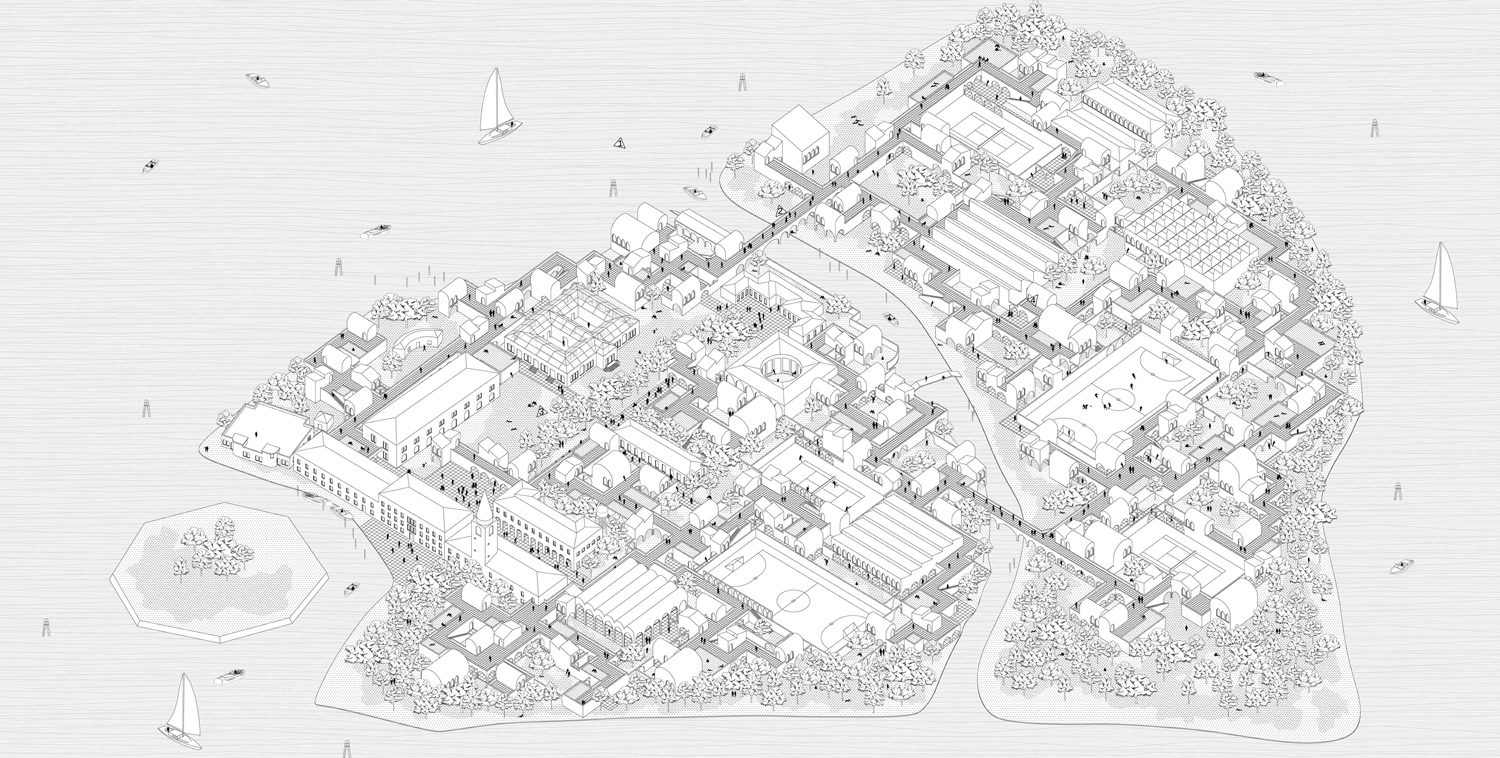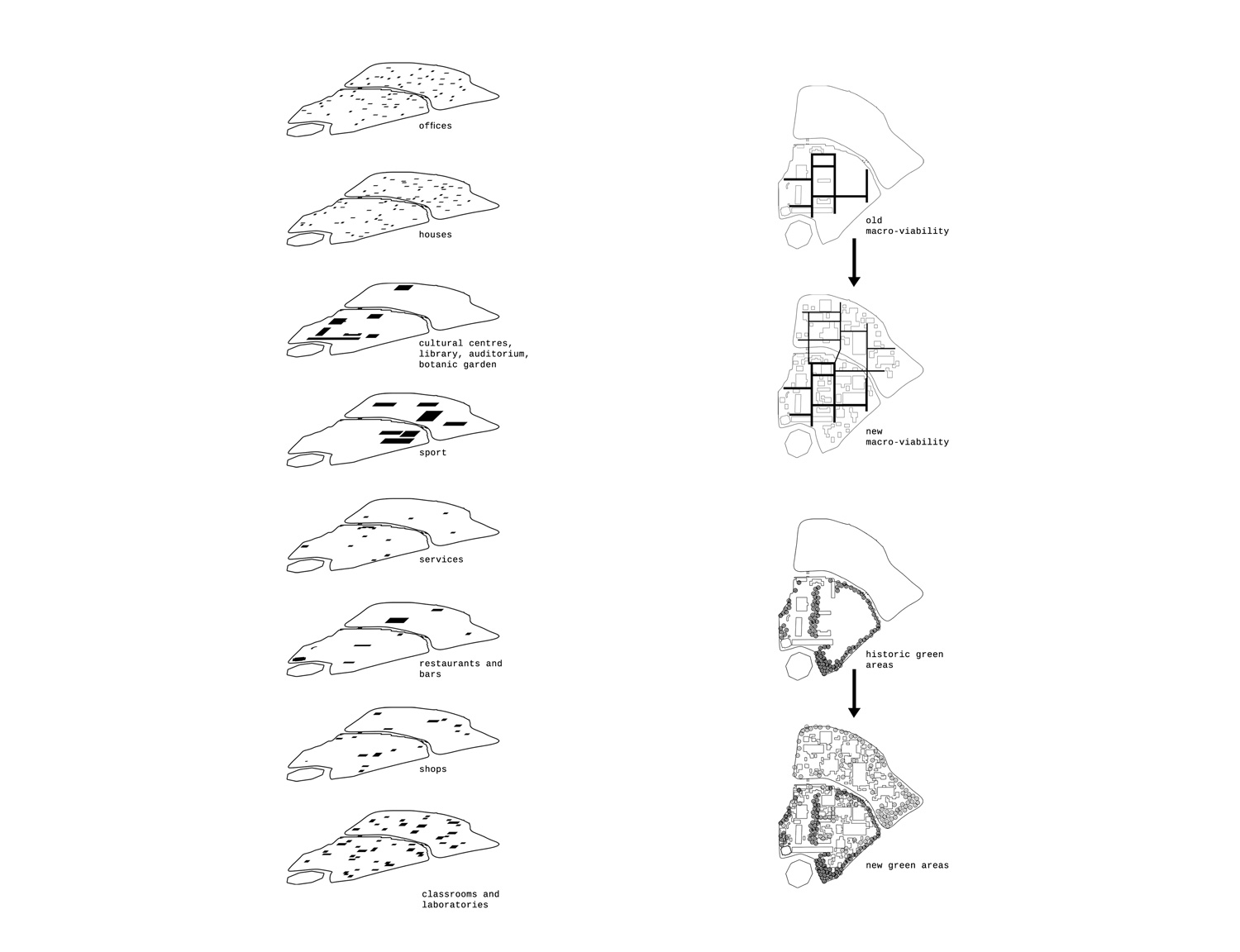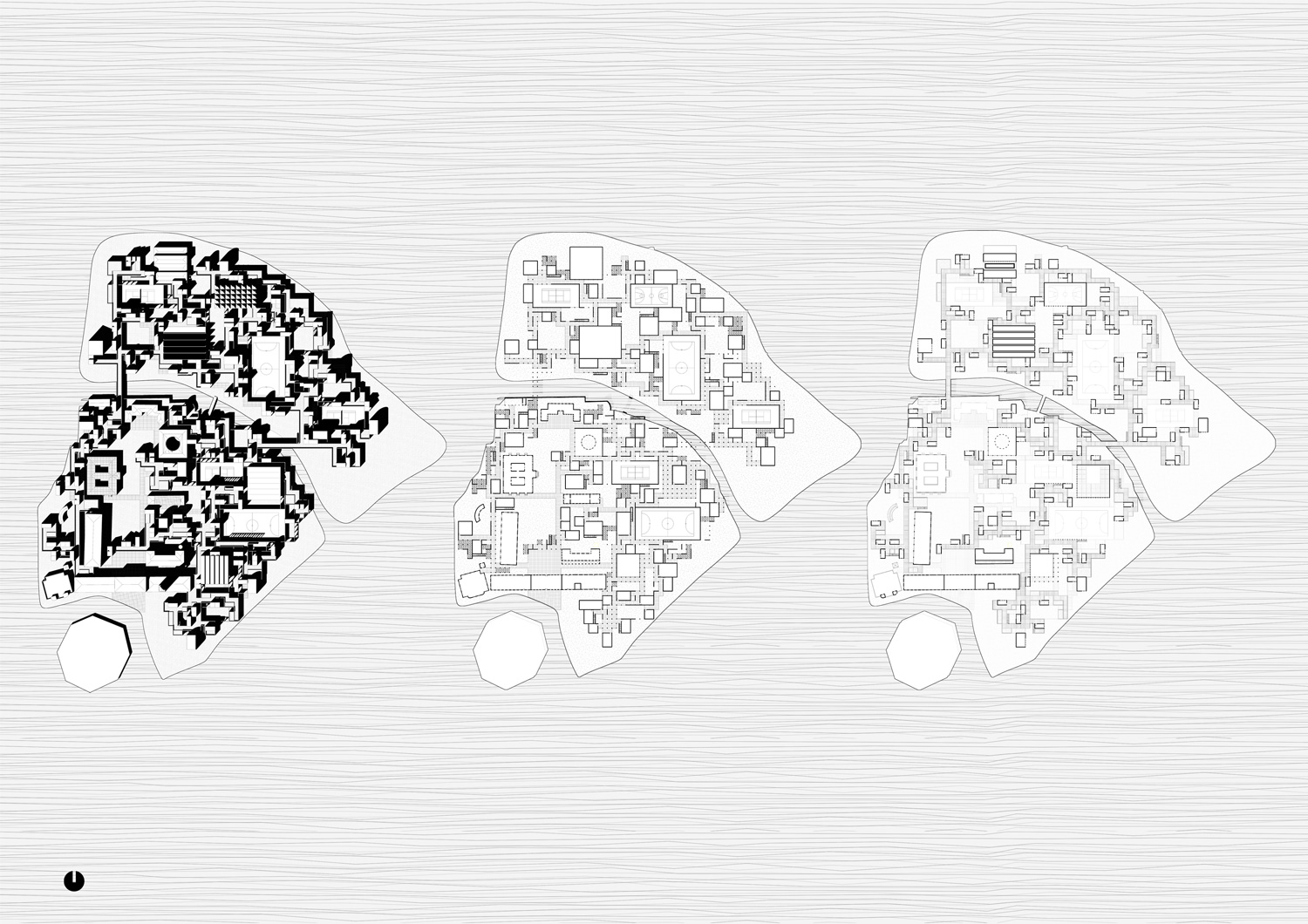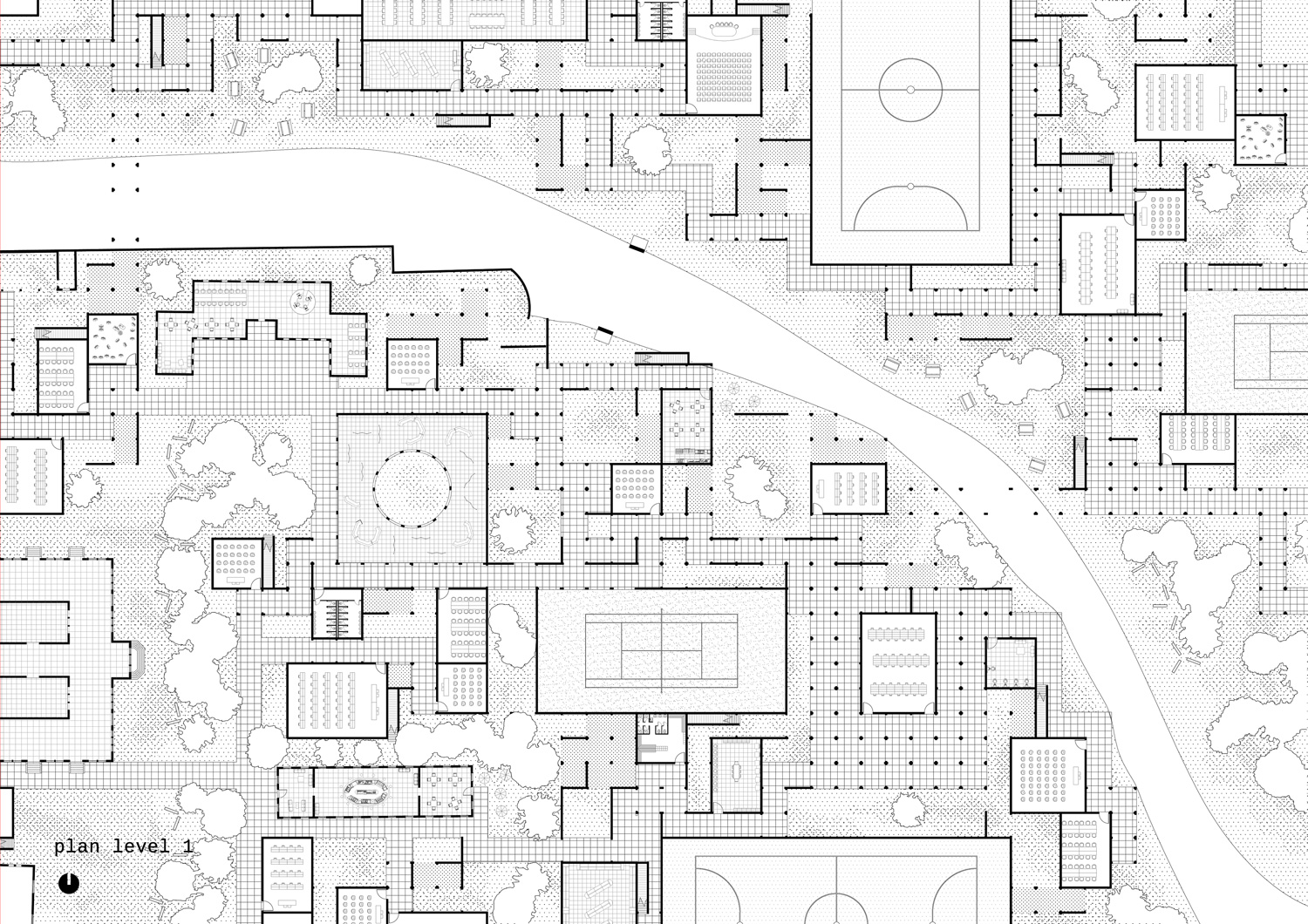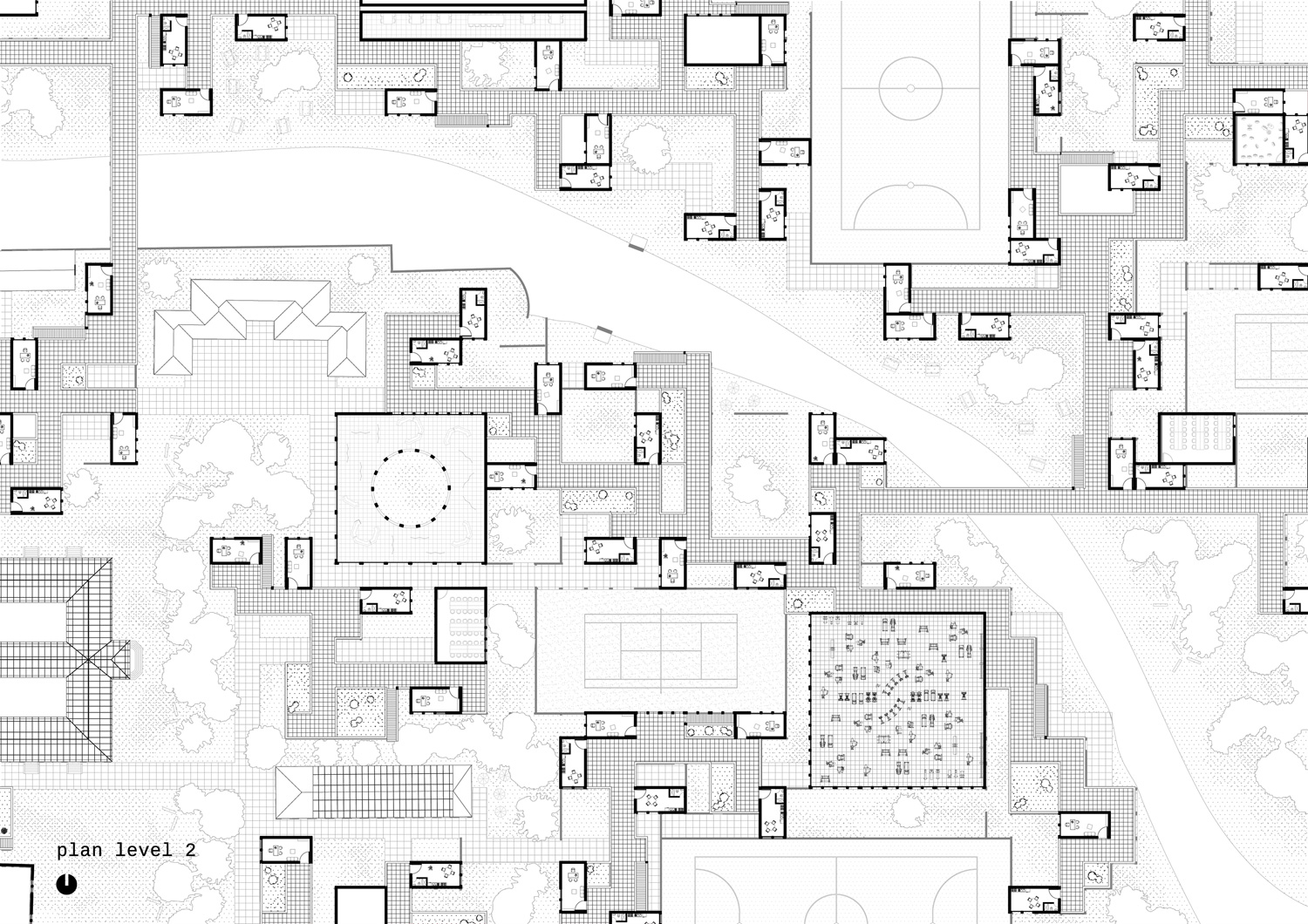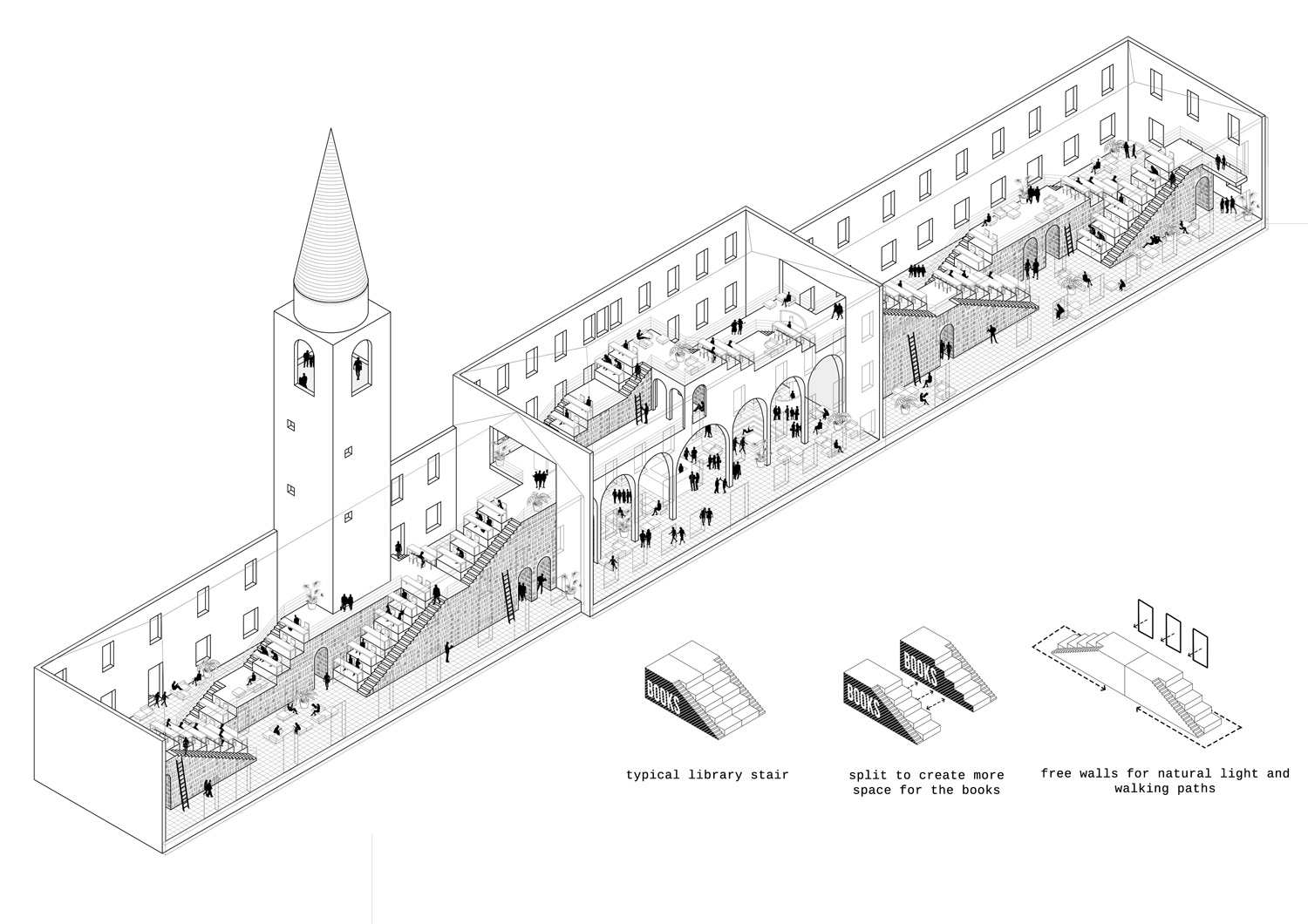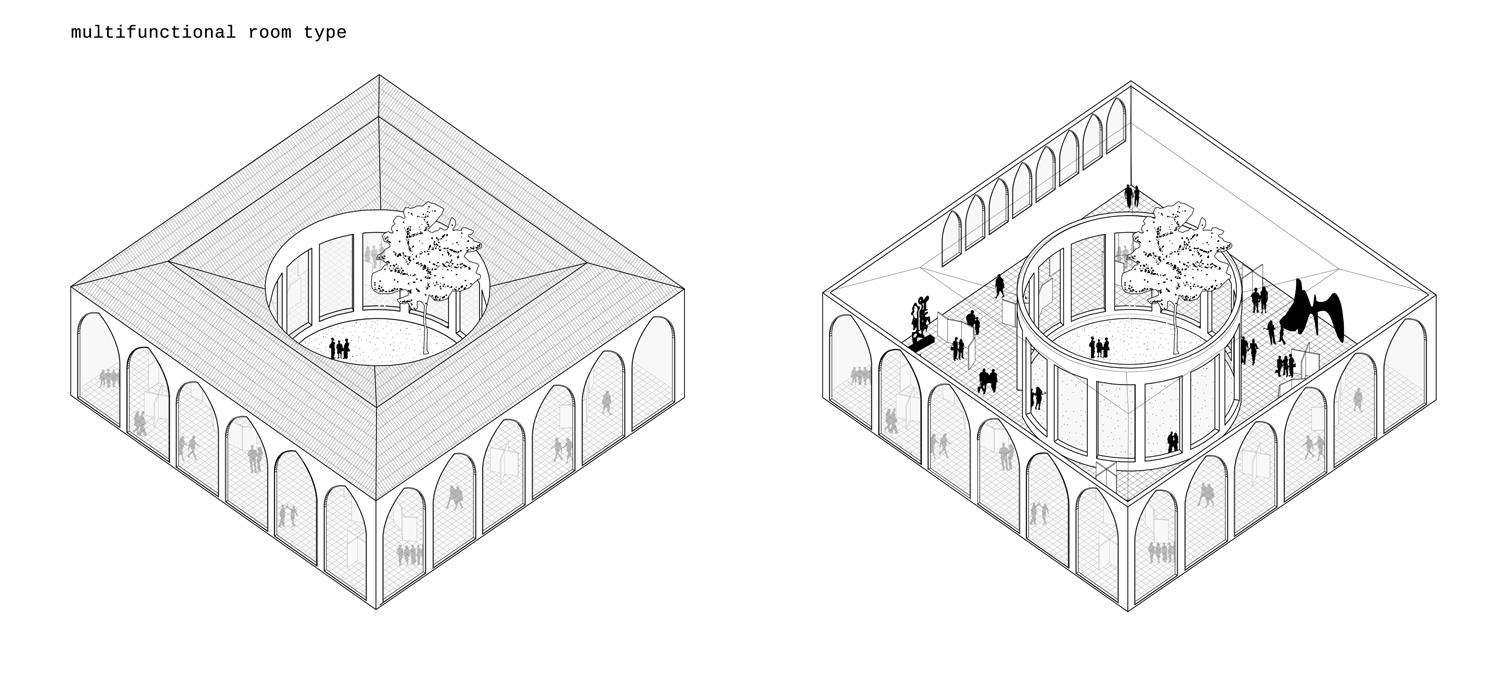1608-M2F-VCE.IT-2016
Client: Young Architects Competitions
Status: Competition (2016)
Clasification: Finalist
Location: Venice, Italy
Coordinates: 45.381767, 12.331406
Climate: Humid subtropical, Temperate
Material: Concrete
Environment: Seaside
Visualizer: Studio
Scale: 4.749 ㎡ Medium
Types: Education, University
Venice is a city with a proud past, reflected in the numerous cultural activities that still pervade it, but that, in recent years, it is seeing his identity changing. It is one of the greatest architectural monuments of humanity, and as such, it would suffer in being compared with an ambitious new building, that maybe instead of help in maintaining its position as unique city in the world, would ultimately make it only more common. It is indeed a jealous place, which is not revealed immediately but in fragmented glimpses, that lives in symbiosis with the environment, and finds its strength in unity and coexistence of all its parts, resembling de facto to a single and continuous painting. Its urban grid is dense, labyrinthine, which untieds only at key points such as squares, or the canal grande.
Unlike the venetian city, the universities often manage spaces and functions in a schematic and orderly way; this allows them to separate departments, libraries, residences and offices from each other, and allow them not to find a real relationship with the city. In fact, in the universities, the students could spend a lot of time in them, but they won’t live in them, or at least most of them won’t; and even if they live in the university, they stay in residential areas, often separated from the educational areas. This causes an emargination and a closure, physical and ideal, of the departments, which becomes eremitical areas, partially alive only during the opening hours, and of the residences, alive only after the working hours.
Luckily the typical internal sectorization of the universities is not, however, entirely possible to Poveglia, because of its natural island’s configuration that makes the direct relationship with the city more difficult. This is why in this case the university must also incorporate part of the functions that would normally exist in the surrounding city. In addition, the competition also requires the presence of residences in the project, which joined to the indirect relationship with the city, it means that for the most of the time, some students will spend all their time, day and night, on the island of Poveglia. So the project dialogues ideologically with Venice, and it is conformed like a real city, with its openings, its views, its chaotic appearance, but actually ordered, and especially with all its vital functions. It merges its most typical features, such as classrooms, libraries and offices, with some features characteristic of the city, such as shops, bars, restaurants, supermarkets, banks, barber shops, gyms and cultural centers, in a complete urban system.
The whole complex then does not present itself as an orderly place, where everything is sectored, but as a flexible place where the position, apparently disorganized, of all its functions it continuously keeps it alive, and crucially, encourages the exchange of ideas and of views, typical of an university. In fact, the different departments will no longer be self-referential, but they will be forced to communicate with each other, and so the students, sparking an education more complete, in an atmosphere of harmony and serenity. In addition, with this configuration, the students will really live the university in all its aspects, all the areas, and for all the time. The project is also organized to respect the historical green enviroment of the island, actively including it among the necessary connections, and using it as a guide to trace the macro-routes.
The use of buildings similar in size and in topological elements to those of Venice, highlights that also the Poveglia University isn’t revealed instantaneously but in fragmented glimpses, that lives in harmony with the context, and that finds its strength in unity and coexistence of all its parts, establishing then a sophisticated but powerful connection.
